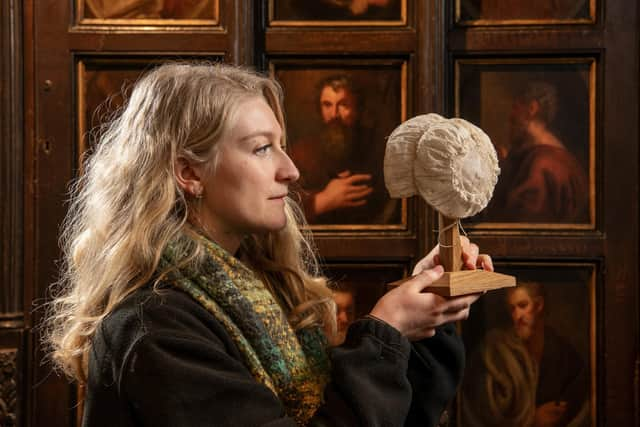New exhibition exploring the Brontes' childhood at the Bronte Parsonage Museum
“It is a long time since we have really focussed on the Brontës’ childhood,” says Ann Dinsdale, principal curator at the Brontë Parsonage Museum. “Last year we were involved in an exhibition at the Brotherton Library at the University of Leeds, co-curated with the university and the British Library. It revolved around items we had acquired including seven little books by Charlotte Brontë and because we also acquired quite a few manuscripts as part of our collection, it felt like a good time to showcase some of those in an exhibition here at the museum.”
The Brontës’ formative years were blighted by tragedy. While they were still very young, the children lost their mother and two older sisters so it is understandable that they sought a way of escaping from the brutal realities of the real world into a fantasy realm where they had control over what happened. “Initially it was sparked by a gift of a box of toy soldiers given to Branwell,” says Dinsdale. “The four siblings each selected a soldier and then created this imaginary world and characters, and began writing stories about them. I think that the Brontës are quite unusual in that what we refer to as juvenilia, work that is produced in childhood, is usually left behind at that stage but with them it continues right up to the time when they were writing their novels in adulthood.”
Advertisement
Hide AdAdvertisement
Hide AdThe exhibition showcases items connected to the themes of family and home, education and grief. They include diaries, portraits, schoolbooks and toys belonging to and created by the siblings when they were children as well as Branwell and Charlotte’s famous ‘little books’, tiny handmade publications smaller than a matchbox made for their toy soldiers, drawings and paintings of their imaginary worlds and some of Emily’s early poetry manuscripts. On display for the first time at the museum are family letters previously held in the Blavatnik Honresfield Library including some conveying Charlotte’s intimate thoughts on death and mortality and her christening cap, on loan from a private collection.


Stay up to date with Yorkshire art and culture with our weekly newsletter
The children’s creativity was actively encouraged by their father Patrick who ensured that they were able to widen their knowledge and develop their talents. “I think because of the huge difference that education had made to Patrick’s life, he was really keen that his children would get a good education, and he was prepared to invest in that,” says Dinsdale. “He wasn’t a wealthy man by any means but he made sure that they all had music lessons and he bought a second hand piano. He had a very enlightened attitude towards education for the period, in particular the education of his girls. All four children were all tutored at home and the girls were able to sit in on Branwell’s more academic lessons so they had a knowledge of Latin and the classics, which was uncommon for girls at the time.”
As Patrick was busy with his work in the parish, his approach to parenting was a kind of benign neglect. It was an unconventional childhood and the children had the freedom to pursue their own activities, creativity and reading. “He never censored any of their reading and they read very widely,” says Dinsdale. “They grew up reading Byron which was unusual and had a significant influence on their own later work. Also, from an early age the children would hear all the Haworth gossip, local folklore and ghost stories from the family servants.”
Dinsdale hopes that the exhibition will offer some new insight to visitors into how important the early life of the Brontës was in their development as creative people and ultimately in the creation of their celebrated works. “The Brontë novels are endlessly fascinating and I think because they are so original and different, people want to understand them; hopefully this will help that understanding,” she says. “We are focussing on the fact that the Brontës made a very long apprenticeship with their writing. Everything they read and learned as children fed into those complex worlds that became more sophisticated as they grew older. Eventually the characters they created in childhood became characters such as Rochester in Jane Eyre and Heathcliff in Wuthering Heights. The exhibition is an exploration of the shared influences and experiences that fed into those great novels.”
At the Brontë Parsonage Museum, Haworth until January 1, 2025. bronte.org.uk